Hinges are essential pieces of flexible hardware that attach doors, gates, lids, or other swinging parts to a frame, allowing for opening and closing. Although many hinges look similar, several types may be better suited for certain applications. Choosing the perfect hinges for your project depends on where you’ll install them and the finished look you’re trying to achieve. In our guide, we’ll explain the different types of hinges and how they’re used.
11 Types of Hinges
When choosing the right type of hinge, consider its application, frequency of use, how the hinge will attach to the surface, the door’s construction, and the hinge’s finish. This visual guide highlights different types of hinges and their design and purpose.
Butt Hinge
The most common type of hinge used on doors is the butt hinge. It’s so named because the two leaves are mortised into the door and frame, allowing the two to butt up to each other. A pin, that may or may not be removable, joins the two leaves (or plates) at the hinge’s knuckles. There are three different types of butt hinges—plain, ball bearing, and spring-loaded. Builders generally use plain butt hinges for lightweight interior doors.
Option: 2-1/2-inch marine grade stainless steel butt hinge, 1/8-inch thick, $11.89, Amazon
Ball Bearing Hinge
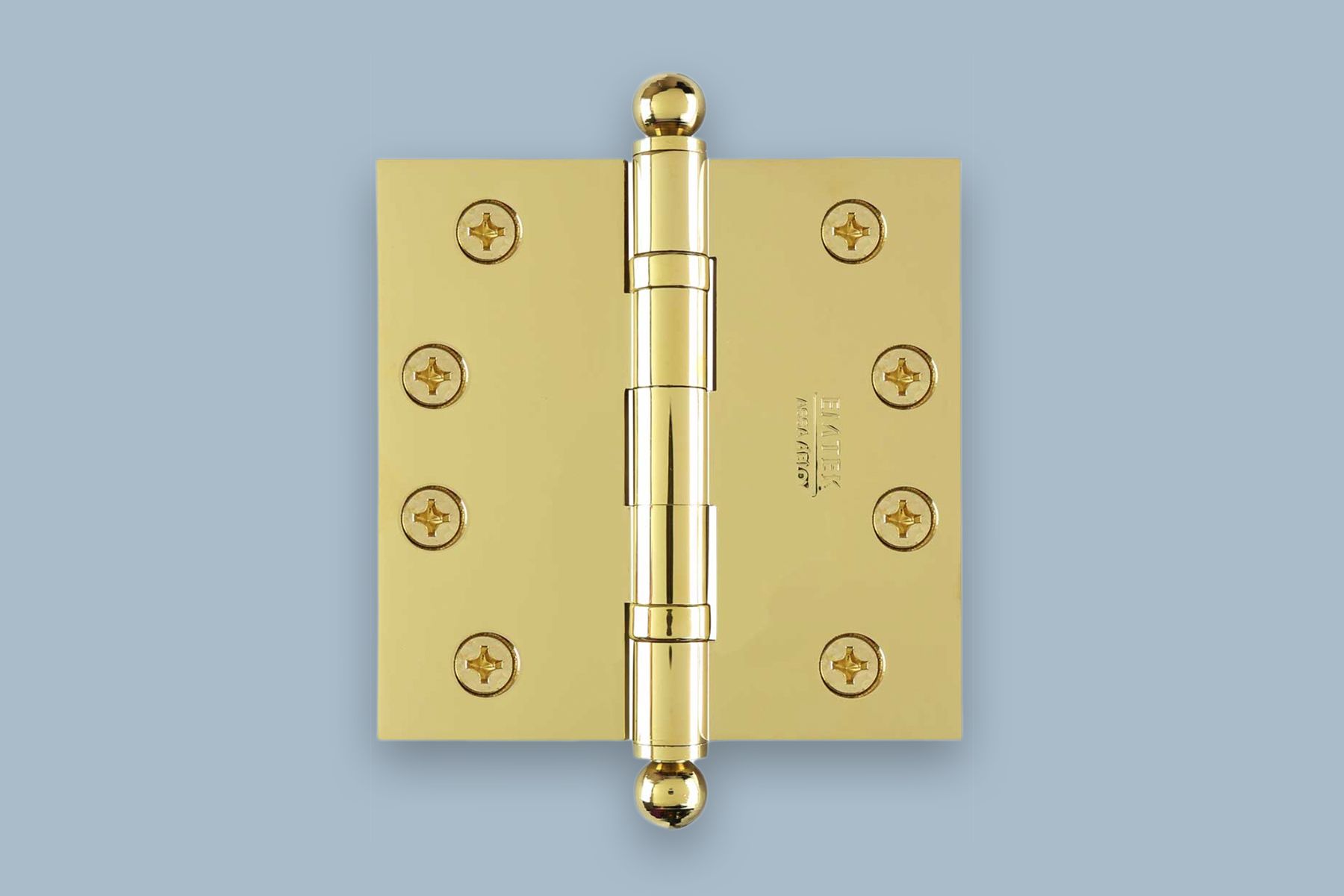
The ball bearing hinge has lubricated bearings between the hinge’s knuckles to reduce friction caused by heavy doors. These durable hinges are ideal for heavy entryway doors or for doors that are in frequent use.
Option: 4-inch solid brass ball-bearing door hinge, $17.95, Amazon
Spring-Loaded Butt Hinge
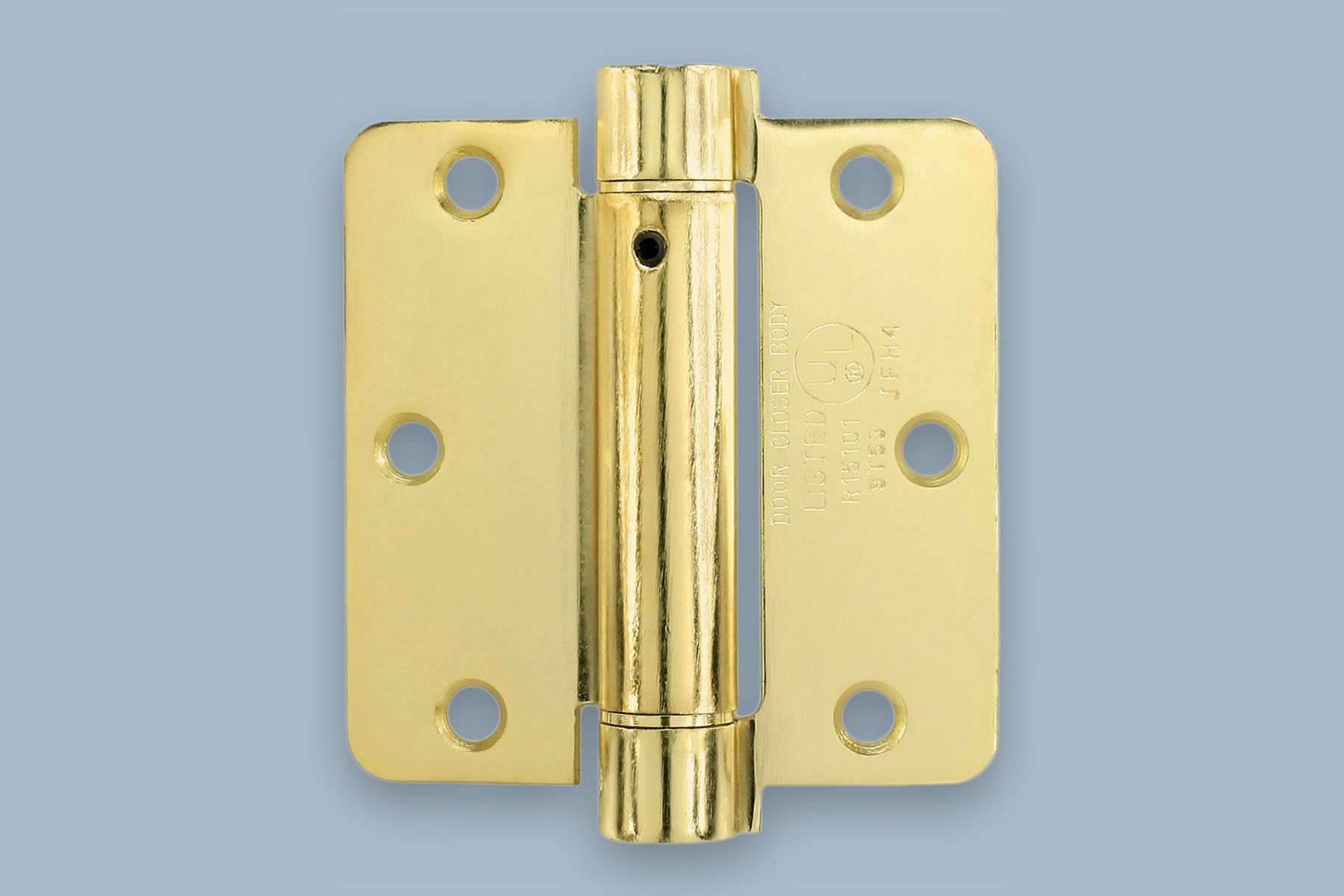
To assure a door closes behind you, use a spring-loaded butt hinge. These hinges resemble the butt hinge, but they typically have a spring attached to the pin. This ensures that doors—usually screen doors—will close automatically. You can also calibrate these hinges to open or close with varying degrees of tension.
Option: 3.5-inch 1/4-inch radius spring-loaded butt hinge, $18.99, House of Antique Hardware
Rising Butt Hinge
A rising butt hinge raises the door 1/2-inch to clear a thick-pile carpet or threshold. When closed, it looks like a regular hinge. A rising butt hinge is best if you have a thick floor covering, such as a carpet, or a jamb that prevents standard doors from easily opening and closing.
Option: Rising butt hinge for doors 1-3/8-inch to 1-3/4-inch thick, brass plated, $19.97, HardwareSource
Barrel Hinge
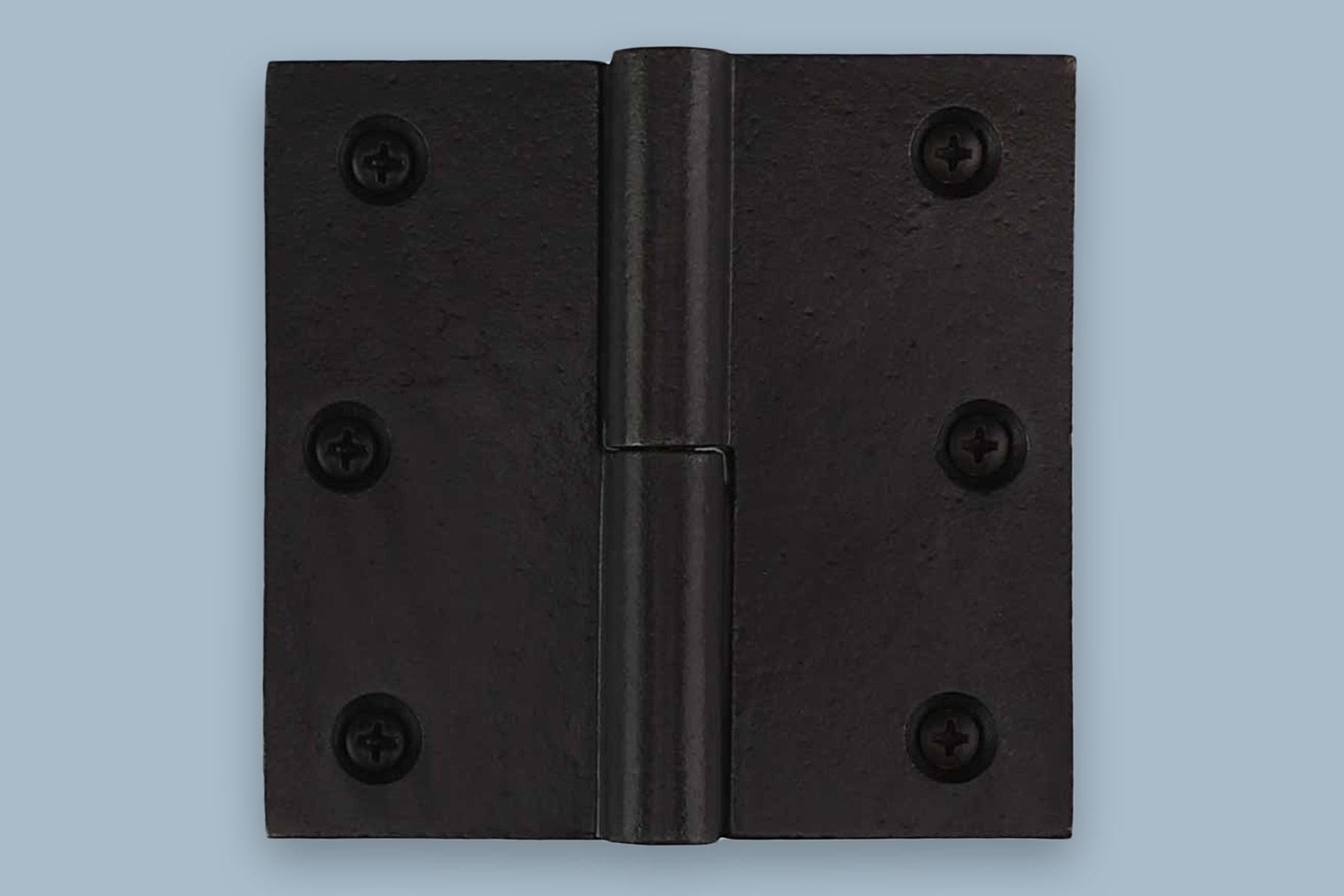
For specialty woodworking projects, like a box or small cabinet, use the barrel hinge. This small hinge is ideal for projects where you want the hinge concealed from view. To install, drill holes that will accommodate the barrels and insert the hinge. Typically made of brass, barrel hinges are not designed for load-bearing applications.
Shown: 3 1/2 inch cast iron barrel hinge, $13.49, House of Antique Hardware
Concealed Hinge
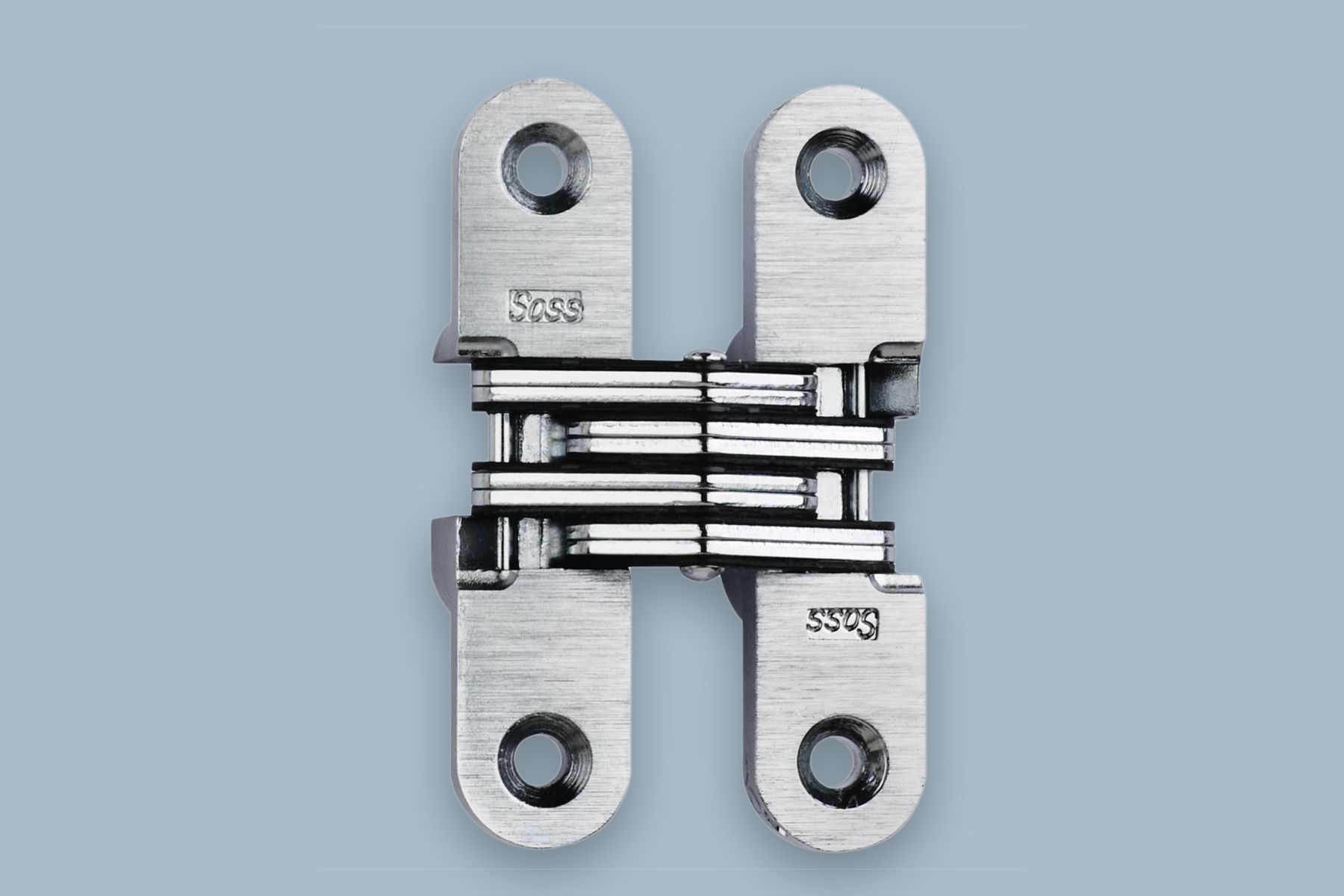
Designed not to be seen, concealed hinges don’t detract from the beauty of fine furniture or cabinetry. These invisible hinges can be self-closing, and they can also be adjusted with the aid of a couple screws. You can find larger concealed hinges for doors. Since they aren’t exposed when the door is in a closed position—and are therefore tamper-proof—these can provide security that regular hinges don’t.
Shown: SOSS 208 2-3/4 inch H satin brass mortise concealed interior door hinge, $19.29, Lowe’s
Knife (Pivot) Hinge
You’ll find knife hinges in cabinets. Also called pivot hinges, they resemble the blades of a pair of scissors, attached at a pivot point. One hinge leaf is mortised into the end of the cabinet door and the other hinge leaf is mortised into the cabinet. Once installed, all that’s exposed is the pivot.
Another type of pivot hinge allows doors to pivot open and closed both ways, much like the kitchen doors you see in restaurants. These spring-loaded hinges are larger and heavier than those made for cabinetry.
Option: 1/2-inch overlay self closing knife hinge for 5/8-inch+ thick doors, $14, Amazon
Overlay Hinge
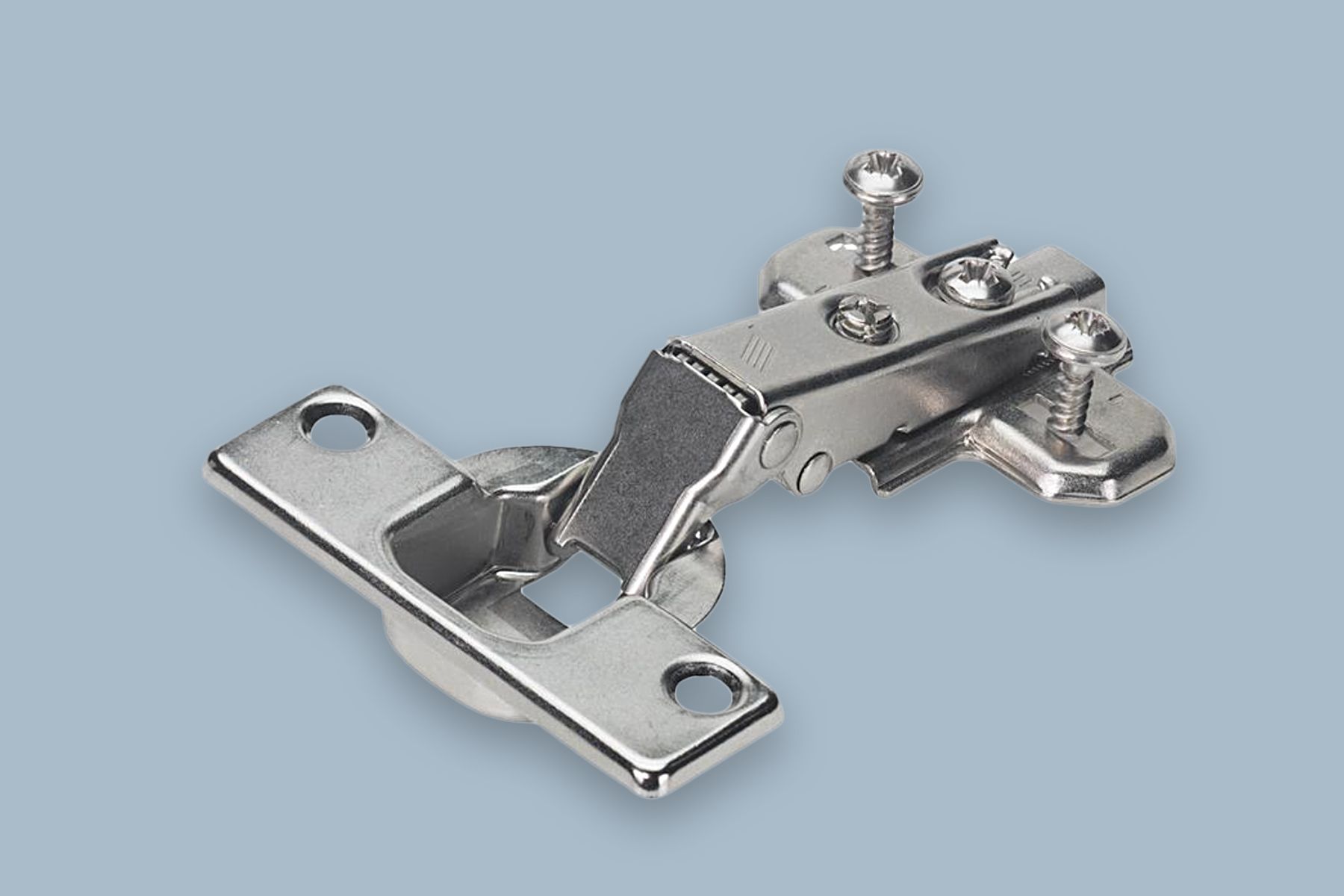
Some hinges add thickness to the cabinetry. To reduce that thickness, consider the overlay hinge. This type of hinge folds back on itself, allowing the door to lay flush against the face of the cabinet.
Option: Full overlay Blum 95° thick door clip top hinges, $23.97, Amazon
Offset Hinge
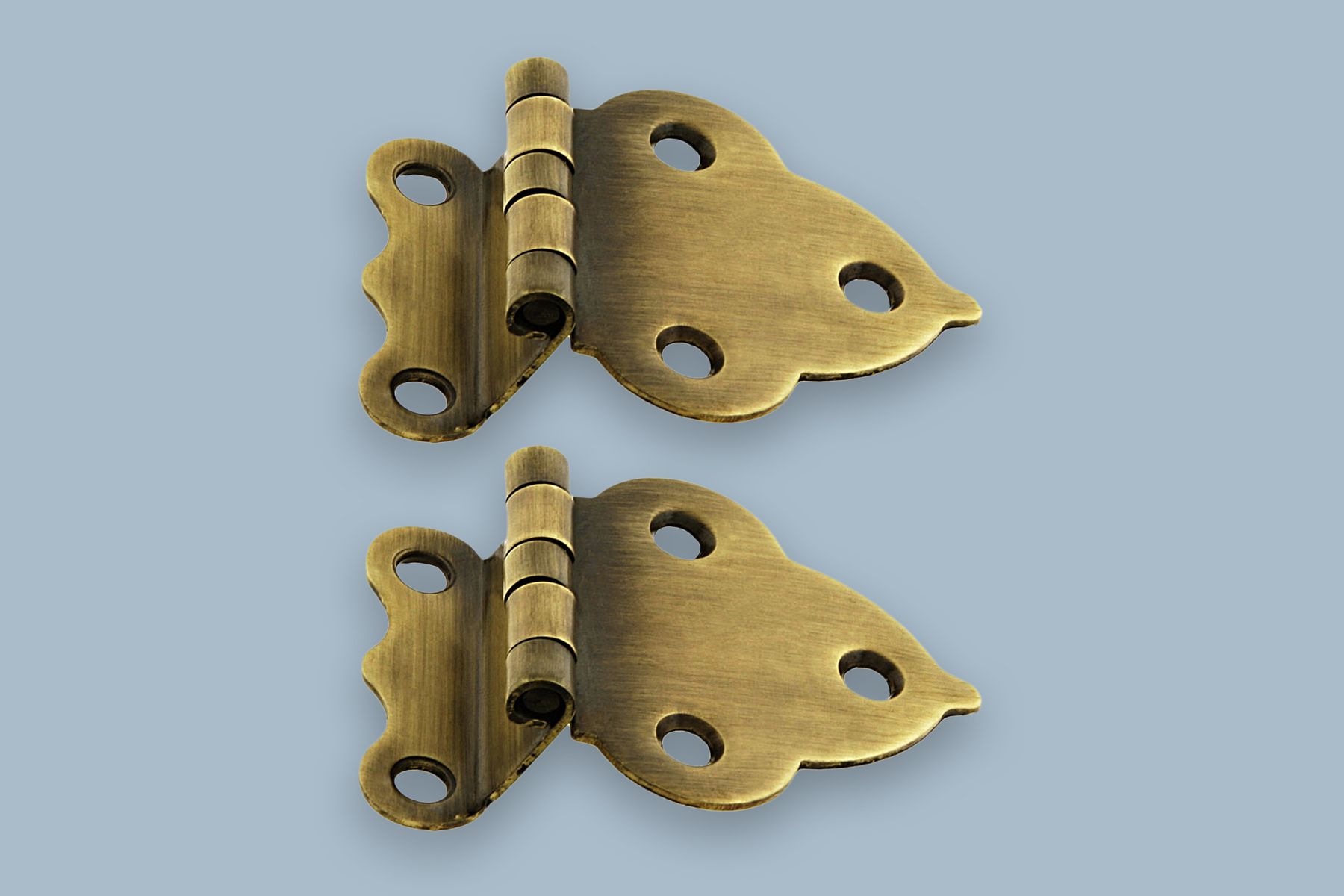
Have you ever tried to move a couch through a doorway, only to find that the doorway is half an inch too narrow? That’s where an offset hinge helps. This specialty hinge allows you to swing the door away from the doorframe, widening the opening up to 2 inches. Offset hinges are especially useful for areas you want to make compliant with the Americans with Disabilities Act (ADA).
Shown: Offset Hoosier cabinet hinges in antique-by-hand, $21.99, House of Antique Hardware
Piano Hinge
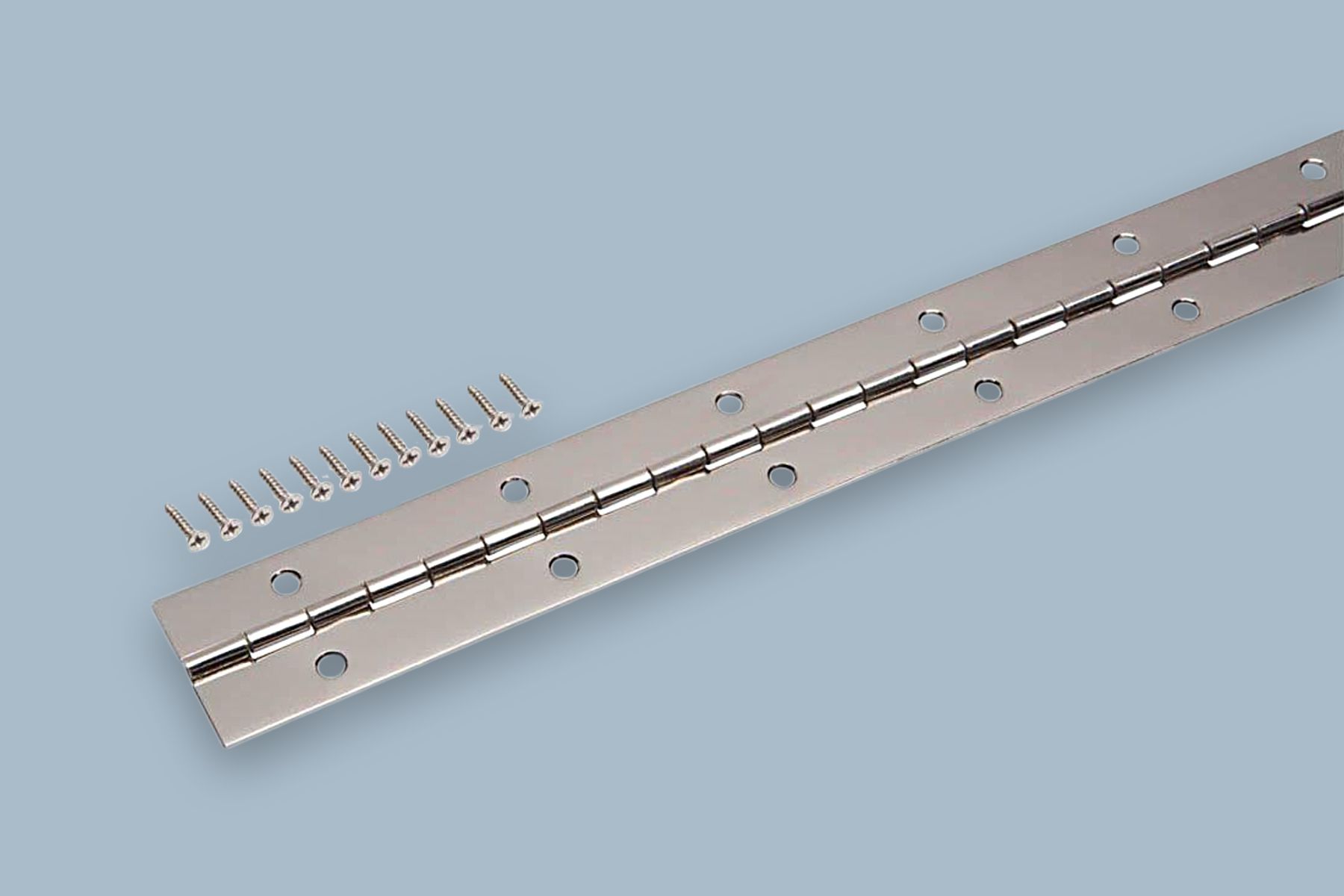
The long, continuous piano hinge is named for the hinge on a piano’s lid. A long rod runs through the knuckles of this hinge’s two long leaves, holding it together. It’s the perfect hinge choice for toy boxes, fold-down desks, and storage benches.
Shown: Everbilt 1-1/2 inch x 30 inch bright nickel continuous hinge, $6.99, Amazon
Strap Hinge
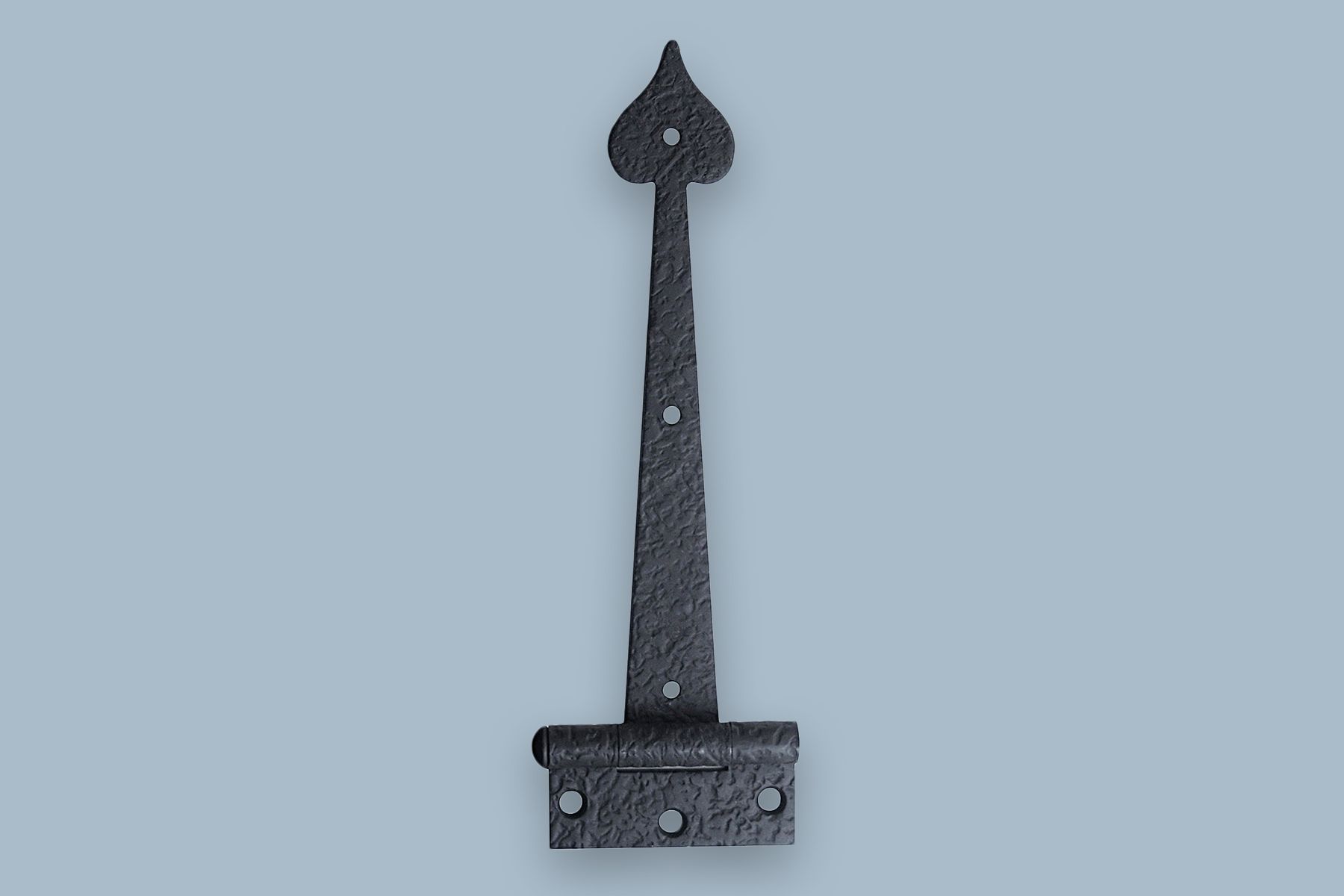
You’ll often find heavy-duty strap hinges outside on gates. Inside, designers use smaller versions of strap hinges on cabinets to achieve a rustic feel. The long hinge leaves (or straps) add extra support for heavy gates or barn doors.
Shown: Rough forged iron strap door hinge with heart design, $24.59–$51.95, House of Antique Hardware
Our Conclusion
Hinges come in an array of styles and a variety of materials—including stainless steel, brass, bronze, pewter, and copper. You can also choose from different finishes like chrome, polished, or brushed to complement your application and design.

